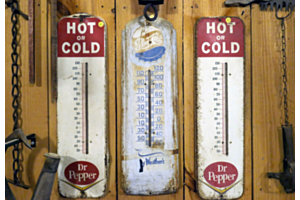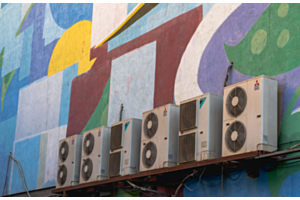How Far Should the Condensing Unit be From the House?

Although you’re not installing your ductless mini split system yourself, you still want to ensure everything is set up the right way so you can maximize your home’s heating and cooling potential. That has you curious about the condensing unit and where it should go. Should it be closer to your house or further away?
Let’s answer that question in today’s post.
What Is the Condensing Unit?
Before we get into condensing unit placement, let’s make sure we’re talking about the same unit here. The condensing unit is also known as the condenser or the compressor. It’s one of the key parts of your ductless mini split system.
Unlike the air-handling units, which go in the various rooms of your home, the condensing unit stays outside. When your ductless mini split system begins running, the indoor unit the removes either the heat, cold, and or humidity from that room and sends it outdoors to the condensing unit.
Since heat flows from high temperature to low temperature, the heat stored in the refrigerant will be released due to the difference in temperature between the temperature on the ambient air and the temperature on the liquid refrigerant on the condenser coils. This happens in the cooling mode. For the heating mode, what happens in the condenser will now happen in the evaporator, and what happened in the evaporator will now happen in the condenser.
Remove heat/cool/humidity with a minisplit
After a few cycles through, the air temperature changes, becoming cooler or warmer according to how you set the indoor unit’s thermostat.
How Far Does the Condensing Unit Go from the House?
The condensing unit needs both overhead room and some space on the sides. On the day your ductless mini split system is installed, the technician should set up the condenser so it has 20 or more inches of overhead clearance. From the wall of your home to the condensing unit, there should be five inches if not more.
Besides just the distance of the condensing unit to your home, your mini split technician needs to take into account other factors during installation. For instance, your condenser should not go in an area where it receives direct sun. A shaded spot is always recommended to keep the condensing unit from overheating.
You also want to confirm that, outside of the wall of your home not being too close, the condensing unit is unobstructed on all sides. The condenser should be kept away from any vegetation, plants, and shrubs. If this greenery grows, the plants can limit how much air can be released from the condenser, which in turn impacts the efficiency of the indoor air-handling unit.
If You’re Ready to Buy a Ductless Mini Split System, Get in Touch with PowerSave AC Today
At PowerSave AC, our team specializes in single-zone and multi-zone ductless mini splits. The higher energy efficiency and better cost savings you’ll enjoy through a mini split system are unparalleled.
Installing a mini split and condensing unit system is surprisingly simple, and now that you know where your condenser should go, there’s no reason to deal with an expensive, clunky old heater or air conditioner for a day longer.
Give us a call today or visit our website to explore our mini splits and related accessories. We even offer a seven-year warranty on our compressors and a five-year warranty on limited parts.
Sources:
https://blog.totalhomesupply.com/mini-split-installation-tips/






